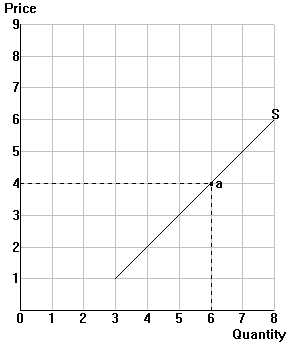 In the
diagram to the right, the initial market equilibrium is at point a.
In the
diagram to the right, the initial market equilibrium is at point a.
| Jim Whitney | Economics 101 |
 In the
diagram to the right, the initial market equilibrium is at point a.
In the
diagram to the right, the initial market equilibrium is at point a.
Your example number: ______
Your linear demand curve passes through point a
and also through the point:
P = ______ Q
= ______
Suppose that the marginal cost of producing cigars
rises by exactly $4 per unit. Carefully draw the new supply curve in your
diagram, and label the new equilibrium price and quantity.
Use your diagram to contrast the total expenditure
(TE=PxQ) of consumers before and after the price change. Shade in TE as
follows:
/// = TE before the price
change
\\\ = TE after the price
change
Use the information from your diagram to answer each of the following questions, and be sure everyone in your group agrees about the answers:
1. Does the equilibrium quantity of cigars (1) rise,
(2) fall, or (3) remain the same?
2. Does the equilibrium price of cigars (1) rise
by more than $4, (2) rise by exactly $4, (3) rise by less than $4, (4)
remain the same as before, or (5) fall?
3. Does the total expenditure on cigars (P x Q) by
consumers (1) rise, (2) fall, or (3) remain the same?